.
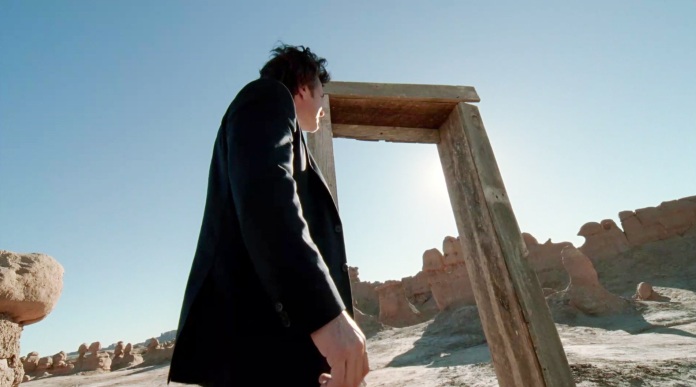
Director/Screenwriter: Terrence Malick
By Roderick Heath
I’ve remained a little bit of a Terrence Malick sceptic over the years, in spite of running the gamut of admiring to genuinely loving his first four films as a director. Malick takes the idea of the filmmaker as artist with profound gravity, and keeps reminding you of it so often there’s an instinct to rebel, as there was at times with predecessors in supercinema like Bergman and Antonioni. Unlike many, I found The Thin Red Line (1998) a flailing, if occasionally arresting mess, as the mismatch of Malick’s airy-fairy preoccupations and the salty stoicism of James Jones ground gears for three hours. But the coherence of his vision in his other three (original) films—Badlands (1973), Days of Heaven (1978), and The New World (2005)—transcends easy categorisation and demands contemplation. Clearly, in spite of his sporadic output, he’s become a director who knows cinema and senses its potential as a symphonic device like very few directors now or past.
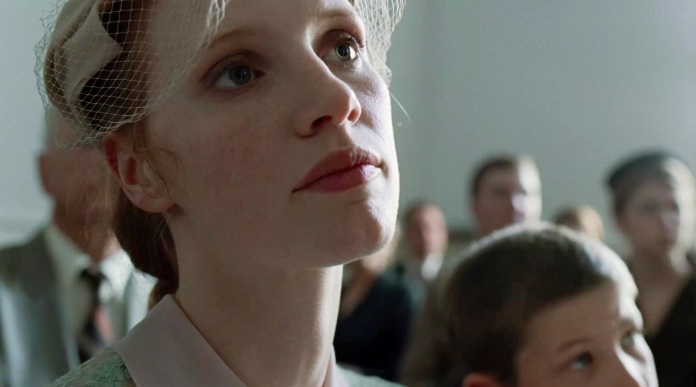
There’s something about The Tree of Life, his new film, which seems practically preordained, or, to put it another way, I was surprised nobody’s tried to make something like it before. His basic material could easily have been rendered as another momentarily absorbing, keenly attentive indie flick about a boy’s rites of passage. But Malick realises it as a supercharged rhapsody of sound and vision, bringing the cosmic and the microcosmic into direct comparison, filled with revelations and curiosity about the meaning of life. If nothing else, Malick deserves an award for his determination to take humans and their universe seriously. The default mode of utter contempt for them displayed in so much contemporary pseudo-drama and comedy has finally met its match in a director who is also a teacher and philosopher. He’s also the most quixotic, if not quite the last holdout of the American New Wave who hasn’t given up his fraught desire to make personal films in a welter of paycheck productions and coke-fuelled mistakes. Malick takes on his subject with a neo-Victorian breadth of curiosity and clasping insight, if also occasionally sinking to the level of a primitivist’s juxtaposition of cute and fluffy nature against human bestiality.

But The Tree of Life doesn’t run away from a key question that Malick has implicitly contended with in his earlier work: is the human soul a fundamentally unnatural aberration, a glorious exception, or a true expression of something too innate to be understood by itself? What about when the soul goes wrong, and the world plunges out of balance? Here he also takes in another question: can a scientific understanding of the universe and a religious sensibility, a desire to believe in the immutability of the consciousness, ever be reconciled? In Adaptation (2002), Charlie Kaufman’s on-screen alter ego, trying to think of an original and coherent way to tackle the obscure subject matter he had chosen, considered tracing the history of evolution itself. Kaufman was taking a poke at the limitations of the commercial cinematic model of storytelling and its needling constrictions, but here it’s as if Malick decided to make Kaufman’s joke into reality.
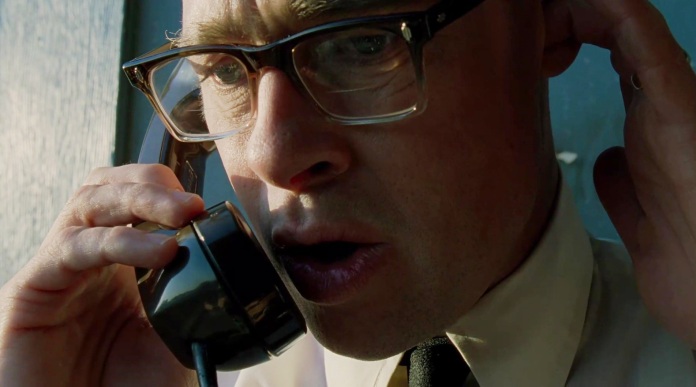
The Tree of Life has earned a lot of comparisons with Kubrick’s 2001: A Space Odyssey (1968), and that’s for fairly good reasons: both employ similar and stunning depictions of outer space and earthly evolution. Malick turned to 2001’s special-effects master Douglas Trumbull to conjure these images, and Trumbull hasn’t lost his touch. Along with Darren Aronofsky’s The Fountain (2006), Malick’s film is almost certainly the most ambitious film by an American director since Kubrick’s in terms of what it wants to encompass, which is nothing less than the place of humanity in the universe. Malick, however, rejects any device to make that link concrete, like Kubrick’s monolith or even Aronofsky’s Buddhist-derived journeying on a spiritual plane. His terms are at once more ethereal and concrete.

The Tree of Life commences with an episode of galvanising emotion: a suburban mother (Jessica Chastain) and father (Brad Pitt), known simply as Mrs. and Mr. O’Brien, cope with floundering, soul-shaking grief and regretful pondering when they learn their 19-year-old son has been killed. They walk the streets in ambling despair; neighbours flock around and some are ordered away; weepy self-admonitions are delivered; mother is consoled by her own mother (Fiona Shaw) with the thought that she still has two sons left. Which of the three sons died is ambiguous: we only know that one of them, Jack (Sean Penn), lives into middle age. There is a hint of identity, as the camera takes a glancing look into a bedroom with a guitar propped up within, and later we see Jack’s younger sibling, Steve (Tye Sheridan), learning the instrument. Indeed, it is Jack’s relationship with Steve that seems most crucially affecting in a signposting fashion, and older Jack then becomes the controlling perspective for what follows, broadly describable as a melancholy and aging man’s wild internal fugue through pasts irreducible.

Jack is a successful architect who labours in great modernist enclaves of glass and steel and flounders around in his bed and kitchen with his wife (Joanna Going), who becomes the hapless, bewildered witness to his tiny ritual of lighting a candle for his dead brother. Fragments of detail slip by to alert us that it’s the anniversary of the brother’s death. Jack has recently sounded off at his dad and apologises to him over the phone. He slides through a working day constantly dipping into distracted reverie, more than trying to recall his childhood, siblings, or parents: he’s trying to conjure where his sense of the divine, the intangible, the moral order, whatever you wish to call it, came from.
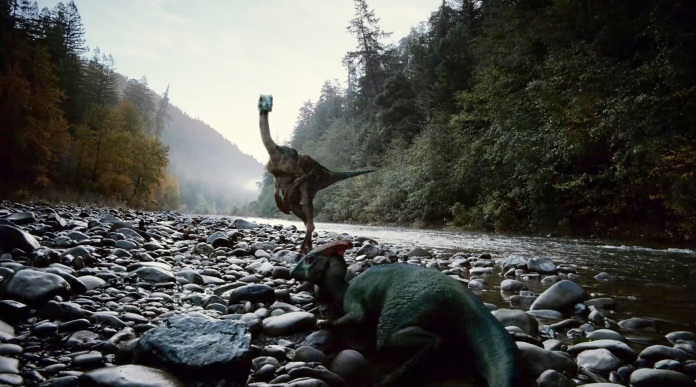
His mother, heard in voiceover close to the start, offers a clear-cut disparity between Nature and Grace, between self and selflessness, substance and spiritual: she points to the sky when he’s a baby and says, “God lives there!” Yet everything Jack knows about the universe, earth, life, explicated in a magisterial sequence showing the eventuation of those things, tells him they’re something less literal and apparently schismatic, if not imaginary. In what’s already become the film’s signature moment, Malick depicts one dinosaur, a roving flesh-eater, sparing the life of another, a seemingly ill or wounded animal: the hunter steps on the prone figure a few times, adjudging whether to eat it or not, and then moves on. Most interpretations of this moment have seen it as representing the birth of mercy, something distinct from nature, but I dissent a little. We don’t know, for instance, if the carnosaur has just eaten, whether it’s actually looking for a mate, whether it doesn’t dig sick flesh (as some predators don’t): the point, then, is that nature only kills when it needs to, and it’s this hint of what is naturally necessary that gives the moment some heft that doesn’t rely on dubious anthropomorphism in dinosaurs. It’s in the stricken consciousness of humans where primal instincts and civil reason collide, where crisis and then cruelty truly develop. Much of The Tree of Life is about the young Jack’s (Hunter McCracken) crisis of growing personality when he contends with the urges to destruction and malice within himself.
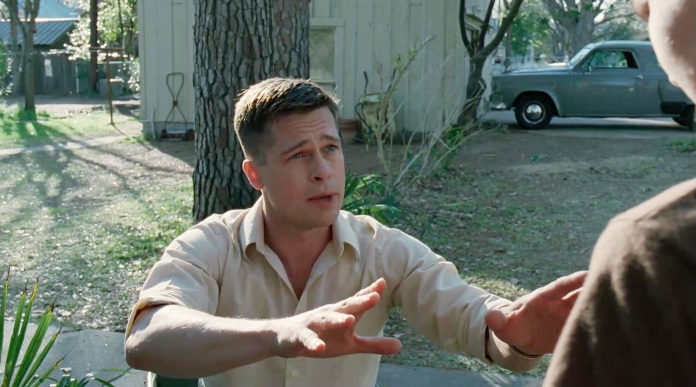
Jack’s parents embody the schism between grace and nature with seemingly primordial certainty, and yet there is blending of the two as well, at least in Mr. O’Brien, a man frustrated first by not pursuing his dream of being a musician and then by being constantly stymied in his professional life. He weaves beauties with music and sustains the life that allows mother and children to eddy in bliss. But he also demands a price for his sacrifice. Malick observes the direct, if not always immediate, cause and effect of O’Brien’s fury at getting beaten out in a patent lawsuit and failed business ventures, which force him to continue on in a salaried job, eaten at by financial and social resentment, and his occasionally explosive temper and taskmaster’s approach to fathering his three rambunctious sons following lengthy scenes in which they were under their mother’s expansive wing.
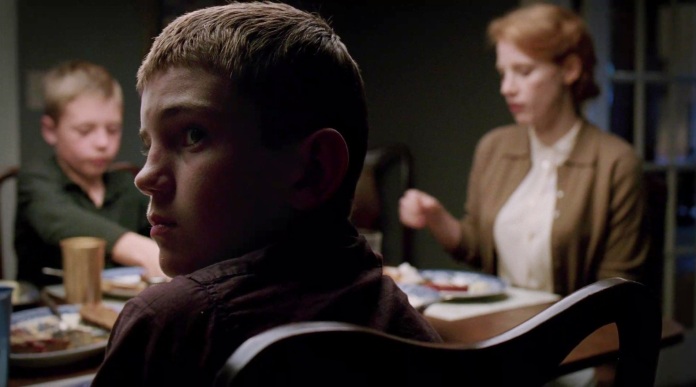
This world is one of rigid roles in the post-war period, and O’Brien’s lot fits into a strand of American drama exemplified by Arthur Miller’s Death of a Salesman in contemplating the disconnection between personal weakness and the grand narrative of American success, although O’Brien is even more archetypal in that he is, in his own way, beset by the trials of Job. He is glimpsed at one point in what is apparently his and his lady love’s courting days clad in a naval uniform, all beatific canoodling, and left living through the post-war idealisation of the settled and suburban with all the contradictions, hypocrisies, and frustrations attendant, in the American landscape that’s perpetually torn between the glories of worldly daring and success and the lustre of spiritual certainty—what Norman Mailer once described as the incapacity of Jesus and Evel Knievel to share the same body. The fallout is registered in telling fragments and elided glimpses of parental fights and father’s quietly bilious life lessons, as well as occasionally jarring moments of O’Brien’s fierce anger at his sons, which leave them with a boding disquiet registered every time he touches them in his bearish fatherly fashion. The main narrative of the film ends with a key act of childhood severance: moving house, when O’Brien loses his job, ripping them from these familiar environs that have shaped them and enveloped them so profoundly.
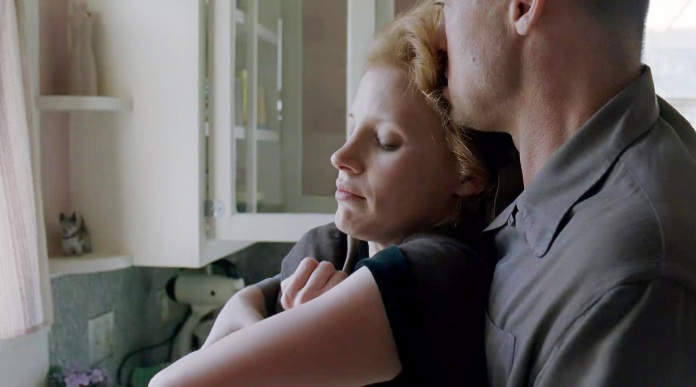
Malick’s work is genuinely poetic and cinematic in several senses: he’s less interested in dramatic explorations of character, though there are intimations of character, than in articulating the archetypal through the specific, an example of T.S. Eliot’s formulation of the poetic sensibility as one that senses how everything is connected. Dialogue, often coming in Malick’s trademark questioning voiceovers, comes either in telling snatches or virtual elegy. The Tree of Life details the processes of birth and growth on universal and human scales and tries to dispose of all remnants of the familiar theatrical structure of storytelling in favour of a sprawl of evolving chains of imagery, compiling into a mosaic. Much of the film is dedicated to capturing a child’s viewpoint, full of near-random shards of experience and observation, the great panoply of life as well as the darker side of things: their introduction to dreadful failure; seeing convicts, variously thin and crazed-looking, revealing to Jack that anyone can end up reduced to total degradation; and death, when a friend drowns in a swimming hole.

Eventually, the boys’ love of freedom and play is corralled into a sense of order and discipline, not without resistance and resentment, by their father, evoking the gradual corralling of the princess of The New World into the forms and trapping of civilisation, an act itself filled with subtle violence but also inevitability and transformative capacity. The real meat of this drama isn’t Science versus God but Rousseau versus Freud. The boys’ sense of rebellion seethes in noting the way their father breaks his own rules. Simultaneously, oedipal glimmerings begin to infect Jack’s preadolescent erotic sensibility. He seems attracted to a vaguely ethnic girl in his class, but he’s also snatching peeks at his mother in her slip, and announces fiercely in one of his occasional shows of possessiveness that his mother “only loves me!” When, on a dare, he invades a neighbourhood house, he snatches away a slip and, infested with guilt and shame in having both committed a crime and its darker sexual implications, he drops it in the river, but the lingering emotion continues to boil within him. Challenges of power, virtually unstated but communicated in sullenly turned eyes, riddle Jack’s relationship with his father, and each senses something within the other that is both familiar and inimical with the preternatural certainty in fathers and sons that Hemingway wrote about in Islands in the Stream (there are other similarities with that novel I won’t dwell on).
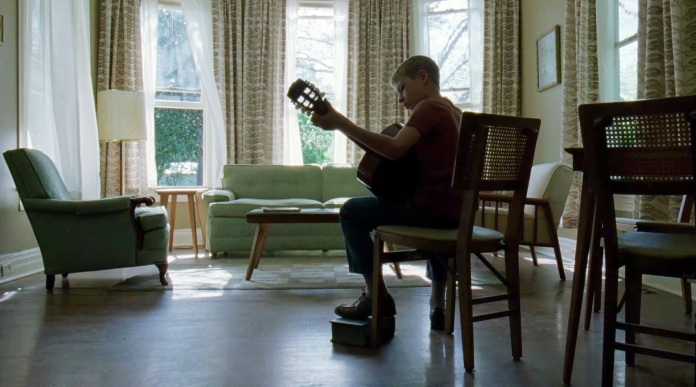
Grand ambition in film directors is often like ambition in generals: when the smoke and thunder clear, often there’s not much left standing. But Malick’s sense of technique is at least equal to the challenge. The filmmaking swings from his now-familiar style of explicating narrative through running montage, replete with observational moments and covert epiphanies, in the character-based scenes, to visions that more resemble those roving life-as-spectacle documentary-frescoes like Baraka (1993), and then changing again for the last segment. The result is a genuinely powerful and transfixing piece of cinema for much of its running time. And yet it demands a certain forgiveness from viewers: anyone not particularly convinced or impressed by the urgency of Malick’s attempt to singlehandedly roll back the Enlightenment and reconcile a schism that still feeds our contemporary discourse, and the often precious nature of his voiceovers, can and will take umbrage at the relentlessness of it. In The New World, one of the great modern films, Malick kept his philosophical and spiritual enquiries mostly encoded in the drama and style, whereas here he shouts them at the top of his lungs before settling down into a story that is far more intimate in its style and permutations, but also more familiar in its essentials. The film’s third quarter, frankly, starts to become a bit oppressive, as it relentlessly proffers a stream of pretty images tied to a narrative that is, by this stage, working in a pretty minor key.
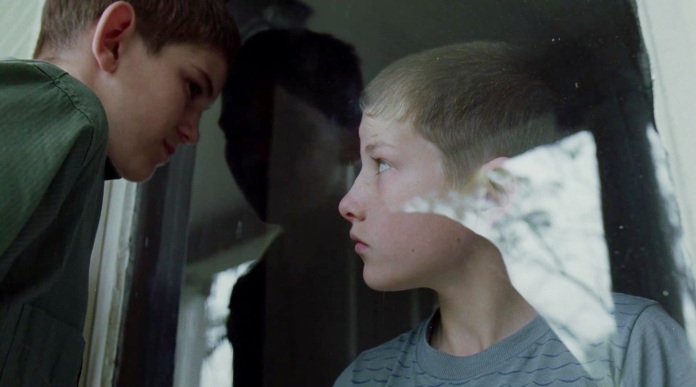
It’s more how the story is told that makes it a genuinely powerful, if not entirely choate experience. The great cannon blasts of Malick’s early narrative suggest man, configured in the adult person of Jack, wrestling with mortality like Jacob wrestling the angel, though the narrative explicitly references Job, commencing with a quote from that book of the bible and with Jack O’Brien’s name neatly condensing into that most beset of biblical heroes. But the bulk of the tale is a memory-dream about the forces that build an individual’s sense not just of life, but also death and how we order our world. The trouble is it’s too hermetic much of the time: the universe has been art-directed into submission by Malick and his production designer, Jack Fisk, who has worked with Malick since Badlands. The substance of adult eroticism has barely entered into Malick’s work except in the tragic passion of Days of Heaven, and his female figures in his last three films have all been flowing-locked, pre-Raphaelite nature sprites; even Smith and Pocahontas’ jailbait romance in The New World was essentially a lot of lounging in the grass and caressing. Don’t look here for anything like as much insight into Mrs. O’Brien as Mr. O’Brien: mother here is everything spirited and angelic, even to the point where there are images of her floating in the air. Her only moments of real substance come when she fumes after one of father’s eruptions of violence. Otherwise, Malick unfortunately confirms a reductive tendency that sees Chastain’s mother as a virtual Victorian ideal of wispy spiritual femininity, and it’s the closest the film comes to sentimental schlock.

Considering the scope of Malick’s aims, I can’t help but wish he wasn’t such a one-note director in many ways; there’s barely any humour in the film, few moments when the banality and boredom of life can be allowed to intrude, no shots of mother labouring to clean up the pristine house in which they romp. Such neglects wouldn’t be a great fault if the aims weren’t so encompassing, but then again, the totality of the mood Malick weaves is a great part of the film’s effect, like a wave crashing on you. Some of the film’s best moments are actually small and well-observed. Perhaps the best blending of his themes comes in a casual scene in which the neighbourhood kids prance with joy in clouds of billowing white issuing from a van spraying the suburb with DDT; the schism between the grim adult awareness of what that could be doing to their health is accompanied by amusement at the kids’ delight in the clouds that seem almost cosmic and spiritual—they resemble the supernovae of the earlier scenes—as well as the good, old-fashioned capacity of kids to turn anything into fun. There’s also a terrific moment when Steve begins to play along on guitar with his father’s piano playing, a sense of things that have been latent in the boys and the father suddenly finding fruition, and Jack’s aggression, which he begins to turn on his brother, then becomes jealous of this bond, too.
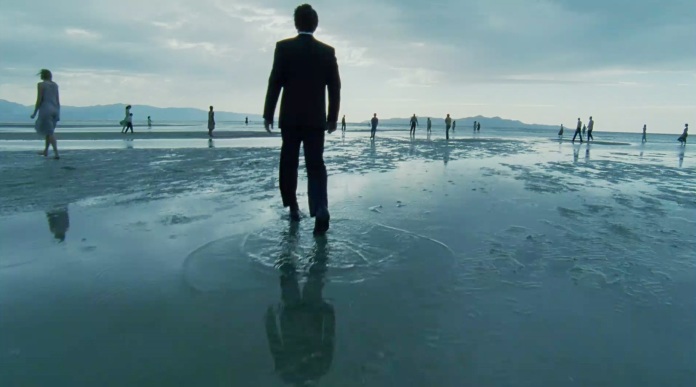
Malick’s dedication to classiness, with his (again trademark) selection of peerlessly discriminating classical music, and the clobbering force of Emmanuel Lubezki’s sun-lacquered images replete with Kodak moments of massive frames full of baby feet and hands and heads, might eventually start to feel as phony as some directors who specialise in conjuring endless grime and cynicism, if it weren’t for the compensatory attentiveness to the finite by Malick and his editors. They bash a mass of footage of the actors and their minutely detailed environs into scenes that are deeply realistic and revelatory without staginess. Malick keeps a strand of American naturalism alive in this regard, even as his films generally reject mere naturalism. A toey, physically charged quality permeates the acting, especially of McCracken and Pitt, who so long regarded as a pinnacle of movie star handsomeness, here looks rather piggish and glazed with a crew-cut and period affect. There’s also the genuine charge of corporeally affecting anguish in Penn’s brief appearances that contextualises the emotional element of the film. The sense in Malick’s structuring lies in the fact that the death of Jack’s brother is not the subject, but a great millstone that has severed him from a sense of his past. All of Malick’s major protagonists want to return to a state of innocence—nothing so corny as sexual innocence, but rather innocence in accepting life as a bounty. Adult Jack rails at contemporary greed, getting “worse and worse,” and the mind flits back to the dinosaurs, taking nothing more than is necessary. Malick depicts a fracture somewhere in his—and America’s, and the world’s—past, where an inability to reconcile aspects of existence creative a vortex of grasping anxiety.

The film’s last phase tends to be cited most as problematic by the film’s detractors, but in many ways, I actually found it the most interesting, if also overlong. Jack’s reverie changes pitch: as he ascends in an elevator, a vision of end times comes upon him. Shots of the Earth consumed by the sun’s final supernova segue into a resurrection. As people wander a vast tidal plain, Jack encounters his father, mother, and Steve. Having earlier pondered how his mother came to terms with his brother’s death, here she’s glimpsed willingly giving him up to spirits that embrace her. The images here, as Jack follows a mysterious woman through the desert and sees himself stepping through a door in the middle of nowhere, filled with enigmatic wanderings, dream-figures, and invocatory gesture, take on a totemistic surrealism reminiscent of Kenneth Anger’s Lucifer Rising, and the film operates on the level of a senseless sensibility that rejects the literal in approaching transcendence. It’s arguable that Malick runs the risk of disappearing up his own backside, but I resist this, because as well as Anger, the scene also reminded me of Castorp’s waking dream in Mann’s The Magic Mountain. One does not have to take it all literally, but rather as an acceptance of imagining as a place where contradictions are reconciled and the intangible solidified: “The great soul of which we are a part may dream through us,” Mann wrote, “Of its youth, its hope, its joys and peace—and blood sacrifice.” In the very last moments, Jack merely reels away from his office and regards the world, with the sun going down behind a grandiose San Francisco bridge, and the sense of time ticking away comes to the fore. Life goes on, but to what end? In much the same way, I came out of the film feeling on a distinctly different plane to the everyday world I re-entered. Faults, blind spots, obscurities and all, The Tree of Life is still a great movie experience.

Rod,
This is a beautifully written piece and an absolute joy to read – I am in awe of the way you parse the film strengths and weaknesses so vividly. I can’t quibble with a single one of your points here. Very insightful.
LikeLike
Hi Pat. Thanks a lot.
LikeLike
Yes, fantastic review! This film is definitely one that demands repeated viewings if only because there is just so much to absorb. I felt so overwhelmed and in awe of the imagery unspooling before me that I missed some of the deeper points that Malick was trying to make and that might reveal themselves when watching this film for a second (or third) time.
You have to give it to Malick, though, he certainly sincerely believes in what he’s trying to say in this film and I admire him greatly for putting forth the effort and challenging viewers by presenting a non-linear narrative film in this day and age when so many films seem to follow a cookie cutter formula.
LikeLike
Very much agreed, J.D. I really want to see it again when it hits DVD even though I paid as fierce attention as I could, just so I can treat it at my leisure. In spite of my lingering distrust of Malick’s over-aestheticisation, I do really love his way of making his images seem to swim on the screen. As for cookie cutter formula, these days there seems to be just as many flip attempts to break formula without any much purpose beyond that. Malick reminds me at least that a real artist isn’t interested in that either way.
LikeLike
I can’t stand Malick’s films, and I think the lack of humour you mention is a big part of why (even Kubrick had his zero gravity toilet instructions in 2001). I presume I’ll catch up with it on DVD, just so I can at least be au fait with the film as a cultural event, but my strike rate with Malick thus far is none from four so I’m not expecting to actually enjoy the experience.
LikeLike
I do know where you’re coming from, JR, even if I still like Malick. There’s a couple of moments in The Tree of Life where I almost sort of laughed: when the kids are dancing in the DDT and when they’re sending up their father. I also recall laughing at John Savage’s whacked-out scene in The Thin Red Line, although probably I wasn’t supposed to.
But there is one point I’d like to iterate to everyone who’s not seen this yet and is thinking about doing so; if you’re going to do watch it, see it on the big screen. It belongs to a school of filmmaking like Lawrence of Arabia and 2001 where the bigger the screen the better for the impact of the visuals, which are at least on a genuine cinematic scale, as opposed to so much of the modern TV-framed stuff.
LikeLike
Very nice review, Terrence Malick sceptic.
“Adult Jack rails at contemporary greed, getting worse and worse”:
You know that “Greed” (Stroheim) had a major influence in Malick?
Malick is not a believing person at all. About what tree of life is he talking about? There are many…
“Grey, my friend, is every theory / And green is Life’s golden tree.” (Goethe)
I leave you a poem he wrote some years ago:
Once when I was young
I went for a ride on a plane
And I stopped believing.
For where else can Heaven be
If not on the tops of clouds?
A kingdom that vast,
Cannot be invisible.
Angels are not cruel enough to hide.
Where did the castle made of clouds
And miracles go?
Was it ever even there?
Remember that “Tell us a story from before we can remember” R.L. asked mother? “I went for a ride in a plane once. It was a graduation present.”
What is the last shot of “Badlands”? The tops of the clouds.
Something more about this:
http://reviewingtreeoflife.blogspot.com/
LikeLike
I wouldn’t be surprised at all, John, that Malick is a fan of the Stroheim film, as it is one of the greats; although there’s little to connect the two works otherwise except in that very general notion of antipathy to greed, both men seem to believe in as deep an immersion as possible in the constructed fictional world for his actors.
LikeLike
Rod,
I’m stunned and awed by your impressive review. I thought I had read the last on this masterpiece, but you somehow have brought an invigorating and fresh look at the film. I agree with you about this especially, ” Much of the film is dedicated to capturing a child’s viewpoint, full of near-random shards of experience and observation, the great panoply of life as well as the darker side of things: their introduction to dreadful failure; seeing convicts, variously thin and crazed-looking, revealing to Jack that anyone can end up reduced to total degradation; and death, when a friend drowns in a swimming hole. ”
I too mentioned this point of view in my review of the film, and I think it’s a key reason for why much of the film works so well. Bravo to you on this accessible and scholarly look at the film.
LikeLike
@ John,
To what are you referring to when you talk about Malick not being a believing person at all? That he doesn’t believe in religion, God etc?
LikeLike
Hi John; thank you for the comment, and I’m glad to have given something fresh to chew on. I too think the point of view is vital to understanding The Tree of Life, which is, as I’ve said, can be very much seen to flow through the adult Jack in spite of all the visual digressions; it’s very much an individual‘s wrestle with life and the infinite. I think when John says that Malick is not a man of faith, he’s almost certainly right in the sense that Malick is probably not a traditionally religious man, and yet there is a deep spiritual yearning, a suggestion of the remnant power of religion in shaping a worldview, throughout his films, with his obsession with Edenic innocence and its fall.
LikeLike
This is an extraordinary essay, essentially because of it’s originality and all-encomppassing approach to this most complex and often most cryptic of films. But as always it’s magnificently-written. Alas there is indeed so much at play here, and it’s a question of collating the components.Cinematographer Emmanuel Lubezki, who brought such visual distinction to the futuristic Children of Men employs a roving camera to arresting effect, while imbuing the Texas sequences with a a mysterical pictorial beauty that has long become a Malick trademark. The 17 minute cosmic sequence of course immediately takes its place as one of the most astounding and spectacular segments in the history of the cinema, a fact that cements Lubezki’s place as a cameraman par excellence. Visual effects wizard Douglas Trumbull, whose work on 2001 is justly celebrated, served as a consultant on The Tree of Life, further establishing an artistic kinship with the 1968 film landmark. The meticulous and believable recreation of the film’s period was essentially the result of ongoing re-takes by Malick, and the work of production designer Jack Fisk and costume designer Jacqueline West.It could be reasonably argued that the modern-day framing sequences involving the grown up Jack (played by Sean Penn as a successful architect) detract from the central story. Jack for one, appears distraught, and the largely wordless sequences are awkwardly staged and inconclusive, at least until the arresting sequence on the beach, ushered in by flowers, when the long-suffering souls are reconciled. The Tree of Life, which opened with a death (the middle son, R.L.) concludes with a kind of resurrection, a clear enough sign that Malick has infused his work with Christian principals, even if his scientific assertions are at odds with theological doctrine.Yet it’s clear enough that Malick’s overarching point is that mankind’s place in the general scheme is as miniscule as a blink of the eye in the billions of years since the Big Bang, and that feelings and memory are as fleeting as the onset of the next series of human events. Certainly one is reminded of the remembrances that are caught for a nano-second near the conclusion of Spielberg’s A.I Artifical Intelligence that are meant to last for all eternity.
The shape of The Tree of Life is more attuned to a symphony in music than it is to a story arc in literature. This is partly as a result of Malick wanting to express himself in “movements” where each evokes moods and textures, but are unquestionably tied to the larger whole of the work, where he intends everything to come full circle. Again recalling Kubrick, the director places music as the vital component to replace dialogue in enhancing his visuals with the proper aural accompaniment to bring his entrancing ideas to full fruition. Among other notable composers, Malick, echoing 2001: A Space Odyssey makes superlative use of Brahams, Gorecki, Berlioz, Bach, Holst and Mahler, which he apparently instructed Alexandre Desplat to incorporate into his own score. The sublime choral passages underline the film’s extraordinary second act, when Malick envisions the dawn of the universe include Zbigniew Preisner’s sublime “Lacrimosa” and give the film a spiritual undercurrent that oddly meshes with the astronomical truths that have always negated theological doctrine. After a planetarium-like showcase of the galaxies in flux, Malick moves back to earth and the prehistoric era, where he captures a cruel act that will later parallel the human clashes in his twentieth centry story. Further, the human fetus in the mother’s womb is a microcosm of evolution, where millions of years are compressed into a few months. There are subsequently long stretches of silence evinced in a visual holding pattern that will allow viewers to ponder the serious questions that are rarely posed in narrative films. In keeping with the central theme couched in the film’s title, Malick aims his camera up trunks to the loftiest branches and green leaves and beyond into the sky. Basically he takes up where he left off in The New World in bringing visual adornment to the the central symbol in all it’s awe-spiring and majestic beauty.
In any event the main story is an abstract coming of age tale that centers around young Jack (Hunter McCracken), one of the three sons of Pitt and his lovely wife (Jessica Chastain) who is before long coming face-to-face with death, iniquity and deviant behavior. In brief vignettes Jack watches the neighbor’s boy drown, breaches his brother’s trust, and steals a dress from another home. But the overriding domestic discord is caused by Pitt’s inability to overcome his authoritarianism. He instructs his kids to address him as “Sir” and even to “Hit me!” in toughening them up for life’s inevitable cruel turns. It’s clear enough that Pitt is loving and well-intentioned, but that he was scarred in a career gone astray. His propensity at the keyboard suggest a missed opportunity, caused by armed forces intervention. Likewise, with any luck, he may have secured a patent for his “inventions.” The mother is less vividly drawn, and in fact is only an ideal for her kids, representing the symbol of motherhood that follows the old-fashioned rules of patriarchal authority. But in this household a volcano is ready to explode. It mirrors the harmony and discord that characterize the difficulties in families when emotions are held in check.
As the tyrannical father who still professed an unconventional love for his children, Brad Pitt delivers what is probably the finest performance of his career. The film’s real finds however are Jessica Chastain, who plays the angelic, nature-loving mom, and young McCracken, a non-professional Texan found near the end of a talent search is extraordinary.
The Tree of Life will inspire serious debate among cineastes for decades to come. It’s one of those rare films that has you thinking days after with the same veracity that dominated your consciousness in the hours immediately following the experience. It’s a towering work by a towering artist, and it will likely exaserbate as many as it will enthrall. It’s a metaphorical voyage into the outer recesses of memory, faith and the infinite that requires far more than the logistics of order and logic. The Tree of Life is both elusive and accessible, vague and lucid, real and surreal. Its a film about the loss of faith and the renewel of belief. Malick has mustered up the audacity to survey the cycle of life and it’s origins, and we can only look on riveted and enthralled on a level one rarely experiences within the confines of a movie theatre. or on a DVD or computer download.
LikeLike
Ah yes, I recognise your original review here, Sam, and kudos to your own strong writing. Yes, young McCracken is great; there’s absolutely no attempt on his part to charm the camera. He just is the part. Whatever the film’s debatable qualities, it’s clearly a work that’s gotten cine-aesthetes fired up and has almost completely missed with general audiences, which is always sad. Cinema is so rarely this adventurous that I feel whether you like it or not a memorial should be put up for it all the same.
LikeLike
Not while watching the film, but while reading your review, I couldn’t help but recall Lynn Ramsay’s incredible short film Gasman. And the French film Ponette. The perspective of childhood, and the crushing face to face introduction of brutal reality into the idyllic, has rarely been presented so heartbreakingly as in these three films. (Though now, Truffaut also comes to mind… I suppose the list is long, but what can I do?)
Your review is stunning. Better than the film itself in some ways.
LikeLike
Thanks Robert. It is indeed a film about childhood, in spite of all, and yes certainly I can detect the faint The 400 Blows influence – although young Antoine’s childhood was considerably more screwed up than Jack’s. I think Malick put a supreme amount of time and effort into trying to depict that free-flowing quality of childhood where days seem to last as long as years and yet we remember only in brilliant snatches.
LikeLike
Well said, as always.
LikeLike
What gorgeous development. I’m envious of your ability to expand the topics of this film.
I’m wondering if you (as I did) found a lengthy number of similarities between TREE OF LIFE and Tarkovsky’s MIRROR: how elements such as water, air, earth were given as much iteration as characters; the degree to which human figures were located below or above the horizon line; the inarticulate, half-dawning realizations of sexuality via proximity to parents; the unresolved feelings toward a parent which are absolved via the alchemy of memory and acknowledgement of nature and its unpredictabilities; the collage-like and pulsive narrative-as-memory-and-impression, etc.
Any thoughts?
Doug
LikeLike
Hi Doug. Unfortunately, you have the jump on me; I haven’t yet seen The Mirror, although from what I know about it I can sense the similarities you mean, quite apart from what I’ve already long suspected was the influence of Tarkovsky on Malick.
LikeLike
Regarding Malick’s spiritual beliefs…
From what I’ve read, Malick is a pretty devout Lutheran, and actually convinced Martin Sheen to return to Catholicism when they worked together on BADLANDS.
LikeLike
This is a terrific essay – my hat’s off to you for refusing to reduce the dinosaur scene to “the birth of mercy” or something so merely … effable? And also for allowing that the final, so-called “afterlife” sequence might require something other than a literalist interpretation.
LikeLike
I prefer Kazan’s A TREE GROWS IN BROOKLYN to Malick’s A TREE GROWS IN THE UNIVERSE. In AVATAR, the big tree is literal whereas it’s metaphorical in TREE OF LIFE, but both are vain exercises in hokum.
LikeLike
Great review. “Articulating the archetypal through the specific” – spot-on.
LikeLike